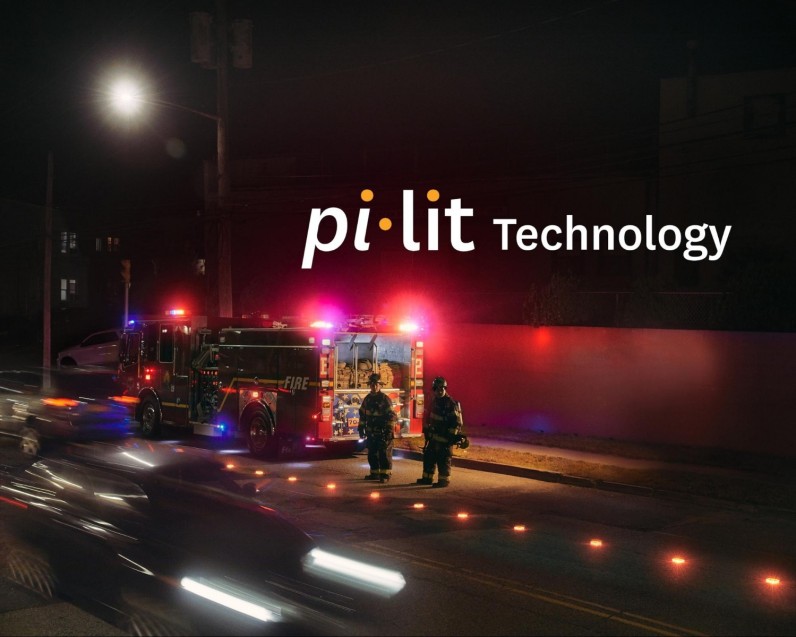
Our world is full of technological innovations that shape nearly every aspect of our lives, yet the state of roadside warning systems remains alarmingly archaic. Despite the era of smart vehicles, the standard for warning drivers about road perils still relies on outdated equipment, such as cones, barrels, reflective triangles, and even flame flares.
Traditionally considered a symbol of urgency and safety, emergency lights can ironically create emergencies themselves. The glare from these lights poses a hazard to drivers, potentially leading to accidents and exacerbating the very situations they aim to address.
The statistics speak volumes—inadequate roadside warning systems contribute to an alarming number of fatalities and substantial financial damages annually. Accident-related lane closures alone result in 566 deaths each year, with an additional 51 first responders losing their lives in struck-by-vehicle fatalities.
The increasing frequency and severity of work zone intrusion accidents paint a grim picture. With a 61% increase since 2013, these accidents now account for $37 billion in damages annually, taking a toll on both human lives and economic resources.
In an era where every vehicle boasts connectivity, the question arises: Why aren't we leveraging this technology to send real-time alerts to drivers? The potential to mitigate accidents through proactive communication between vehicles and infrastructure remains largely untapped, highlighting a missed opportunity in road safety. As we continue to move on to a world where autonomous vehicles are the norm, it's time for the infrastructure to get smarter, too.
As Adam Selevan, CTO of Pi-Lit®, explains, "For the past ten years, the focus has been on intelligence when it comes to cars, and they are incredible now. But the infrastructure hasn't caught up. There is a huge gap between the technology seen in modern vehicles and the absence of similar capabilities applied to infrastructure. There is no reason in 2024 that comparable technology is not found along roadways."
Pi-Lit®, through its innovative solutions, has taken proactive measures to address critical safety gaps in the transportation sector. The company's flagship Sequential Lighting System, initially aimed at guiding drivers away from temporary traffic incidents in work zones, has proven instrumental in enhancing driver safety.
By employing dynamic runway-like guidance through coordinated lighting, Pi-Lit®'s technology has garnered widespread adoption, with several states mandating its use in work zones. Moreover, their handheld sequential flares, utilized by law enforcement agencies and utility services worldwide, further contribute to effective traffic control and management, helping drivers avoid potential hazards on the road.
The company's commitment to safety compliance has contributed significantly to the reduction of accidents in work zones. Studies have shown that coordinated lighting systems, like those developed by Pi-Lit®, are more effective in capturing driver attention and encouraging earlier lane changes and speed reductions. As a result, the risk of accidents and potential fatalities in work zones is significantly reduced, aligning with the broader goal of achieving Vision Zero—eliminating roadway fatalities.
Pi-Lit®'s smart devices are all cloud-connected with GPS tagging of location, real-time notification of impact, and remote reporting of "health status" such as operating conditions, battery level, temperature, etc. By feeding information from their deployed safety devices to transportation departments and navigation apps like Waze and Apple Maps, Pi-Lit® enables the distribution of critical data.
"Our long-term vision is in the future, anytime there is a lane closure, a disabled vehicle on the side of the road, or a damaged crash cushion, Pi-Lit® is the trusted source of what's actually happening on the roadway, right here and right now," says Selevan.
In terms of market impact, Pi-Lit®'s forward-thinking approach and alignment with industry standards, such as the Work Zone Data Exchange (WZDX), position the company as a catalyst for market evolution. As they continue to adhere to standardized protocols for data exchange and collaborate with various original equipment manufacturers and safety product manufacturers, Pi-Lit®'s technology is likely to gain wider acceptance and integration within the industry.
From Sequential Lighting Systems to their cloud-based notification system, Pi-Lit®'s offerings are transforming the landscape of road safety for drivers, transportation departments, and the broader transportation industry. To learn more, visit pi-lit.com.







Join the Conversation